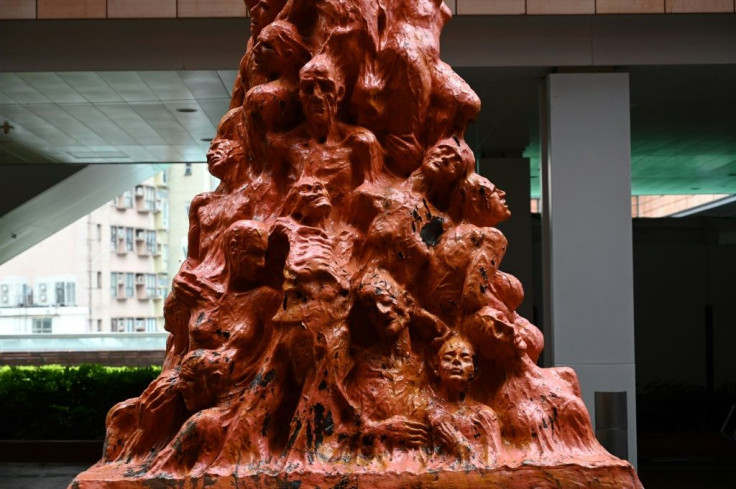China Censors Top Livestreamer, Fans Question Potential Link To Tiananmen Square Massacre Reference
KEY POINTS
- The influencer's livestream abruptly ended after he showed an ice cream resembling a military tank
- Li has yet to post anything on Weibo since June 4, triggering questions from his fans
- He also did not appear for a scheduled Sunday show
Chinese top e-commerce influencer Li Jiaqi’s name no longer returns relevant results on the Chinese online shopping site Taobao as of Monday, and fans are asking whether the censorship is related to his June 4 livestream that saw Li presenting viewers with a plate of Viennetta ice cream seemingly resembling the shape of a military tank.
Li, widely known as the “Lipstick King,” was live-streaming hours before midnight on June 4 when his show on Taobao Live abruptly ended after he and his co-host showed a plate of Viennetta ice cream that featured Oreo cookies and what seemed like a chocolate ball. The ice cream resembled the shape of a tank, CNN reported.
Some of Li’s young fans took to Twitter-like platform Weibo to express confusion over the sudden end of the famous Chinese influencer’s livestream, the outlet reported.
CNN noted that Li, who was born in 1992, might not have been aware that the tank-looking ice cream he was trying to sell before June 4 would trigger a wave of curiosity among young livestream audiences who were not familiar with the events that took place on the eve of June 4, 1989, when Chinese troops opened fire on peaceful protesters, killing an unknown number of demonstrators.
Since Friday, Li has not posted anything on the Chinese social media platform Weibo, The Guardian reported. He also did not appear for a scheduled Sunday show. Some commenters said they only learned about the 1989 crackdown on protesters after searching online for possible reasons for the interruption of Li’s livestream, the outlet reported.
China censors top star after showing ice cream 'tank' on Tiananmen anniversary https://t.co/LQvhTFcz78
— CNN France (@CNNFrancePR) June 7, 2022
Other Weibo users reportedly commented that after Li’s social media disappearance, they learned about the sensitivity of tanks as a topic in China, Fortune reported. Furthermore, some users said they learned about the June 4 protests from family members. Information about the 1989 protest crackdown was not available online, nor through educational textbooks, some users said.
Human rights group Amnesty International said in its report about the Tiananmen Protests and massacre that “hundreds if not thousands of unarmed peaceful pro-democracy protesters” called for political and economic reform in Tiananmen Square in central Beijing from April to June 1989. Martial Law was declared in Beijing on May 20.
According to Amnesty International, “overnight on 3 to 4 June,” the Chinese government sent “tens of thousands of armed troops and hundreds of armored military vehicles” where the demonstrations were being held and “opened fire on crowds of protesters and onlookers.”
The greatest protest photos of all time were taken 33 years ago today. On June 5, 1989, six (not four) photographers captured a lone protester facing down a column of tanks near #TiananmenSquare. This version of the“Tank Man” photo was made by @StuartAFranklin for @TIME...🧵 pic.twitter.com/RLNMEFiqet
— Patrick Witty (@patrickwitty) June 5, 2022
At that time, British photographer Stuart Franklin snapped a photo of a man in a white shirt, shopping bags in hand, facing off with a military tank as he refused to allow a long line of military tanks to cross paths with protesters. Still unidentified years after the massacre, the “Tank Man” became a symbol of peaceful protests versus military strength.
“The Chinese authorities have never disclosed the total number of people detained, tried or executed throughout China since the June 1989 crackdown,” Amnesty wrote in its report, but the non-profit said, “thousands of people were detained, tortured, imprisoned or executed after unfair trials charged with ‘counter revolutionary’ crimes.”
What is considered illegal in Hong Kong is now happening in London: a commemorative event of the 33rd anniversary the June 4 Tiananmen crackdown outside of the Chinese embassy … pic.twitter.com/zFSvBV6aeU
— Vivienne Chow (@VivienneChow) June 4, 2022
Liberty Square, Taipei, the only place in the Chinese speaking world where anniversary memorial events for the Tiananmen Square massacre 1989 is now allowed to be held, is filling up. pic.twitter.com/qYCPgY8Oz9
— Jojje Olsson (@jojjeols) June 4, 2022
The official death toll has yet to be confirmed and the Tiananmen massacre “remains an official taboo topic in China,” according to Amnesty.
On Sunday, a group of demonstrators gathered outside the Chinese embassy in London to commemorate the 33rd anniversary of the Tiananmen Square crackdown. A commemorative event was also held in Taipei, Taiwan, on Saturday.

© Copyright IBTimes 2024. All rights reserved.












